Explore our research driving innovation in science and technology frontiers.
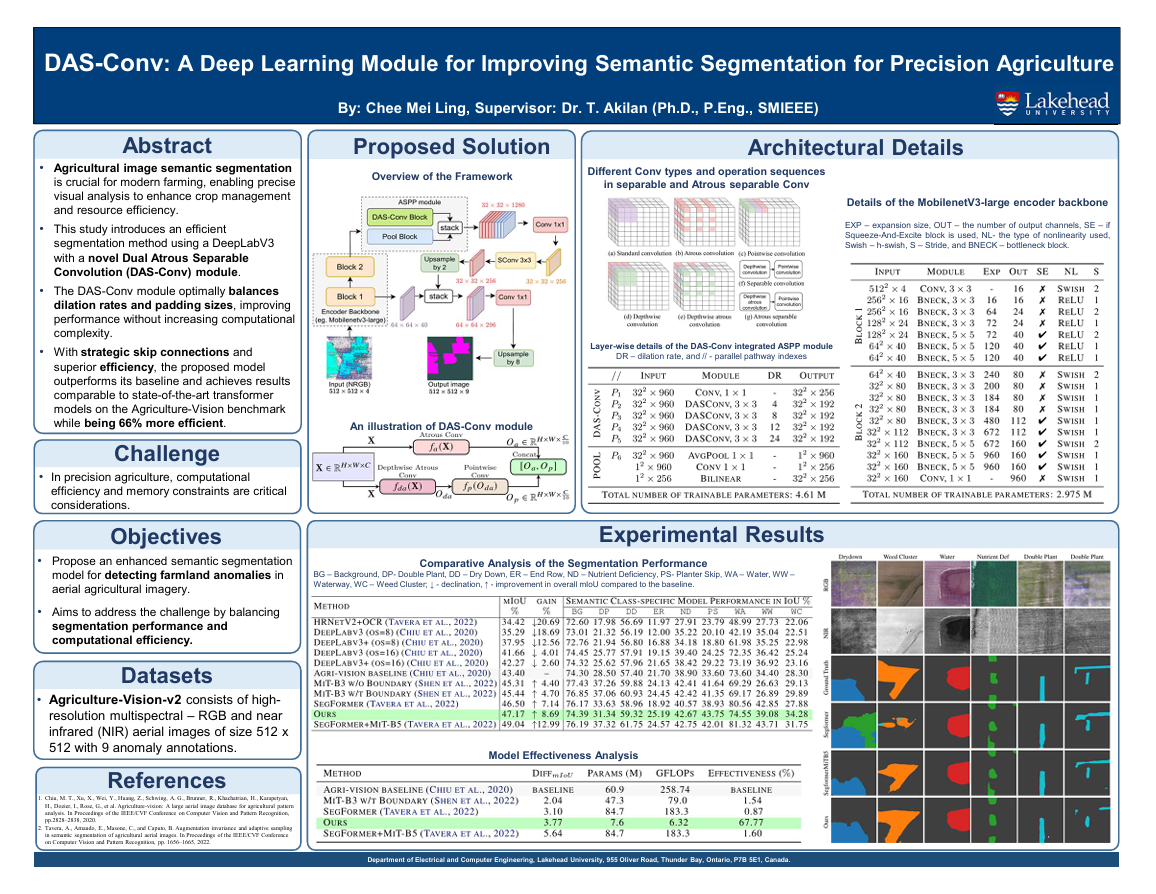
Agricultural image semantic segmentation is a pivotal component of modern agriculture, enabling accurate visual data analysis for improved crop management and resource optimization. This study introduces a segmentation method for precision agriculture that integrates a Dual Atrous Separable Convolution (DAS-Conv) module within a DeepLabV3 framework. The DAS-Conv module balances dilation rates and padding to enhance performance efficiently. A skip connection from the encoder to decoder improves fine-grained spatial feature capture. Tested on the Agriculture-Vision dataset, the model surpasses its baseline and performs comparably to transformer-based SOTA models, while offering over 66% better efficiency in the complexity-performance trade-off. [Research Overview]
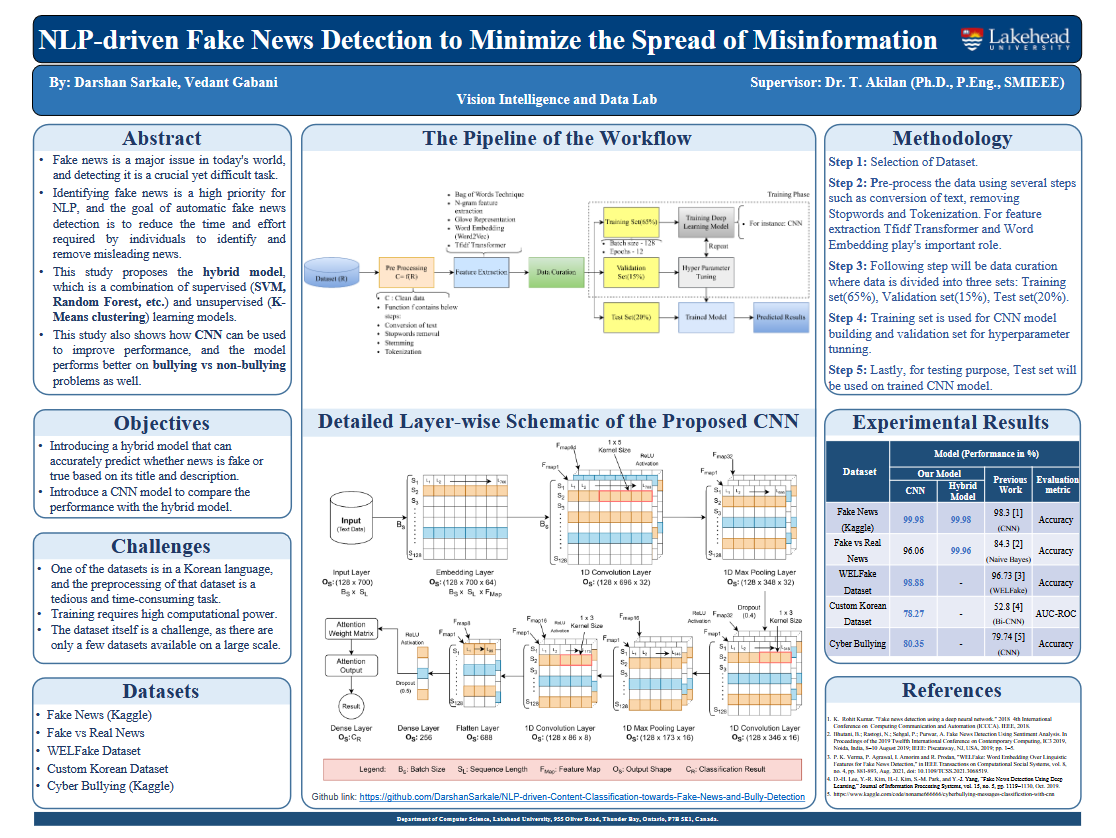
Fake news is a major issue in today's world, and detecting it is a crucial yet difficult task. Identifying fake news is a high priority for NLP, and the goal of automatic fake news detection is to reduce the time and effort required by individuals to identify and remove misleading news. This study proposes the hybrid model, which is a combination of supervised (SVM, Random Forest, etc.) and unsupervised (K Means clustering) learning models. This study also shows how CNN can be used to improve performance, and the model performs better on bullying vs non-bullying problems as well. [View Paper]

Image segmentation is vital for numerous applications, including autonomous driving, agriculture, and medical imaging. This study presents a lightweight model for pavement crack segmentation that integrates attention mechanisms and self-gated activation. The model achieves a 1.85% improvement in mean intersection over union (mIoU) and delivers efficient per-sample inference time of 237ms, making it well-suited for real-time use. Extensive experiments on two benchmark datasets validate its performance against recent methods. The model is designed to handle varying lighting conditions and large-scale pavement areas, addressing critical challenges in crack detection while maintaining accuracy and computational efficiency. [View Paper]
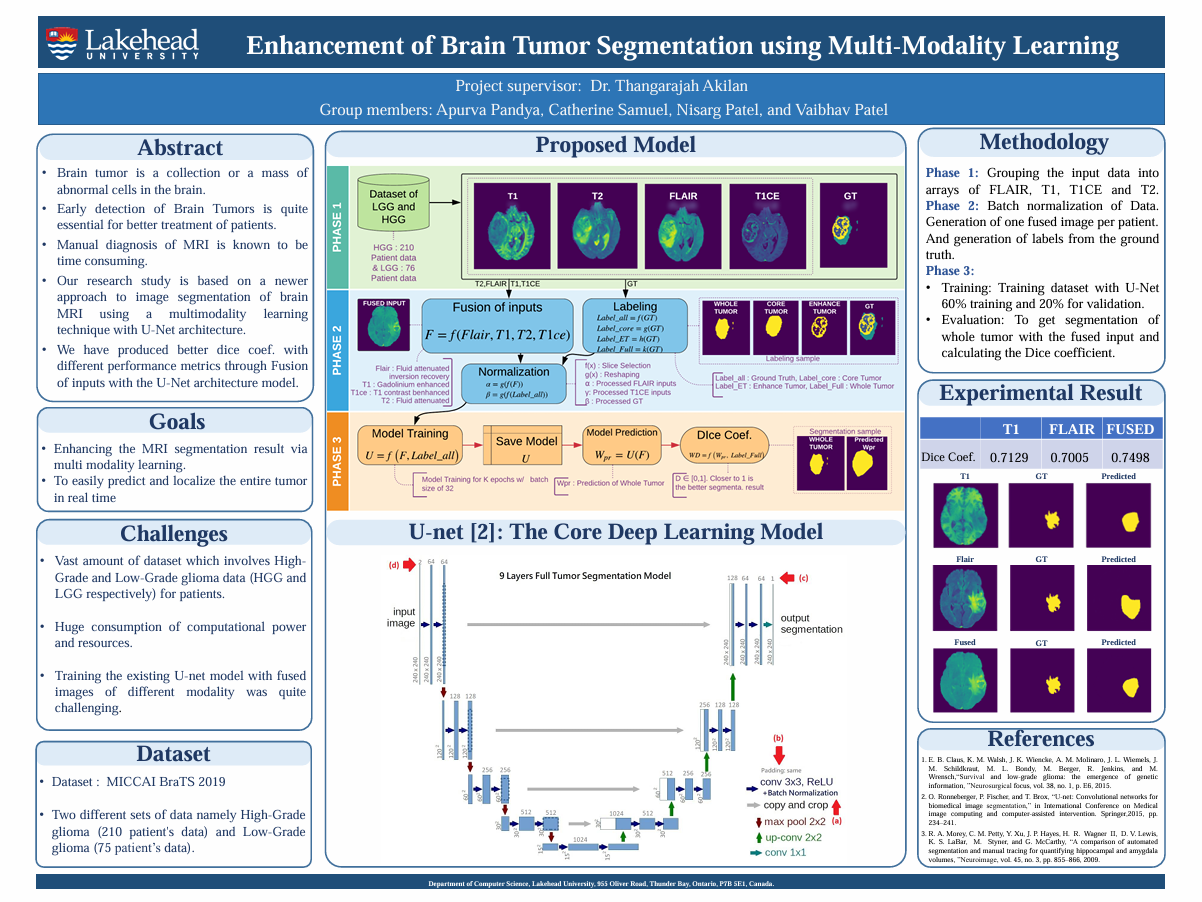
A brain tumor: an abnormal growth of tissue, which is found to be unchecked by the normal cell-cycle control mechanism. Early detection of brain tumors is imperative for enhancing patient care, tailoring treatment strategies, and saving lives. Manual segmentation requires a high level of expertise and is time-consuming. This study proposes a graph attention (GAT)-based model by exploiting multichannel (FLAIR, T1CE, T1, and T2) MRI modalities for brain tumor segmentation. [View Paper]
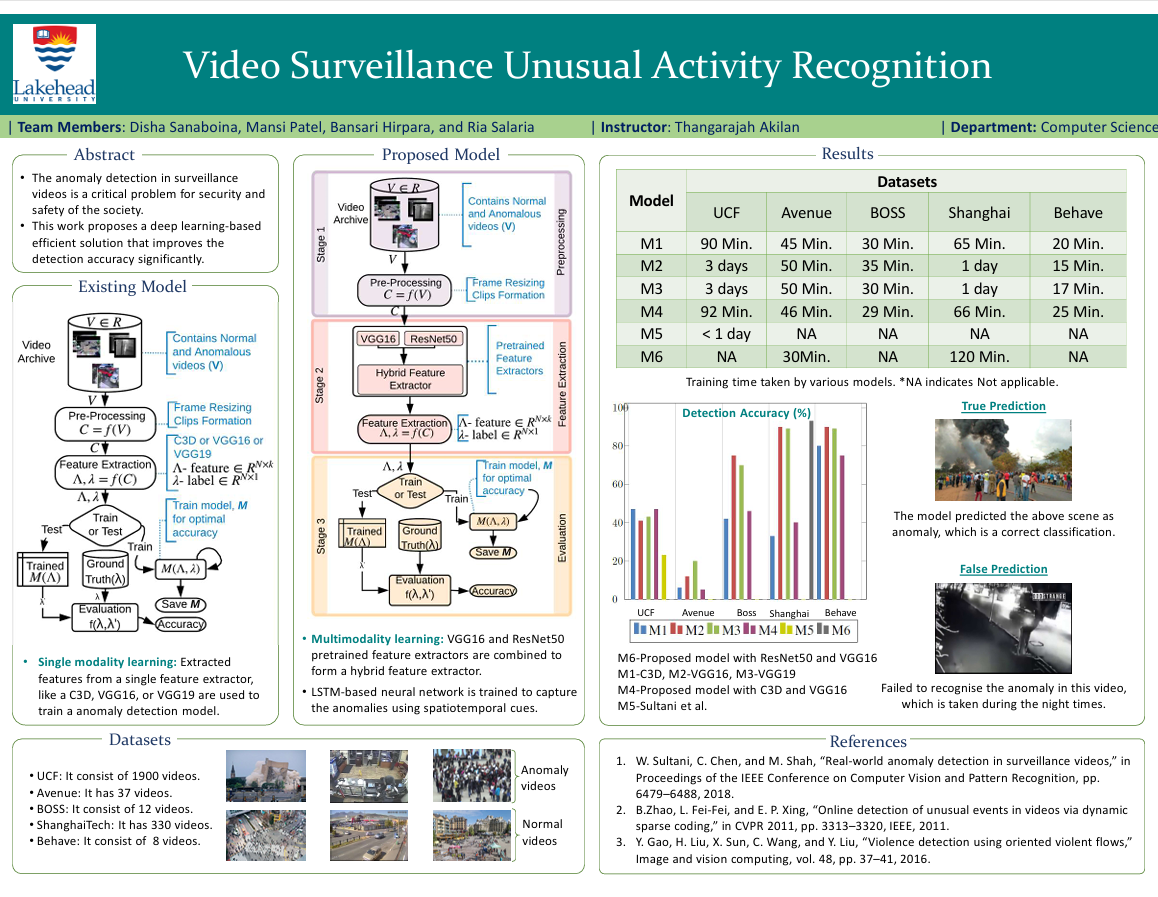
This research addresses the critical problem of anomaly detection in video surveillance for public safety. It introduces a hybrid feature extraction framework that combines VGG16/ResNet50 with LSTM-based neural networks to improve detection accuracy. The proposed M6 model, utilizing ResNet50 and VGG16, achieves superior performance across various datasets (UCF, Avenue, BOSS, Shanghai, Behave) compared to other models. The framework integrates both normal and anomalous videos for training and evaluates performance through detection accuracy, demonstrating a significant improvement in identifying unusual events.
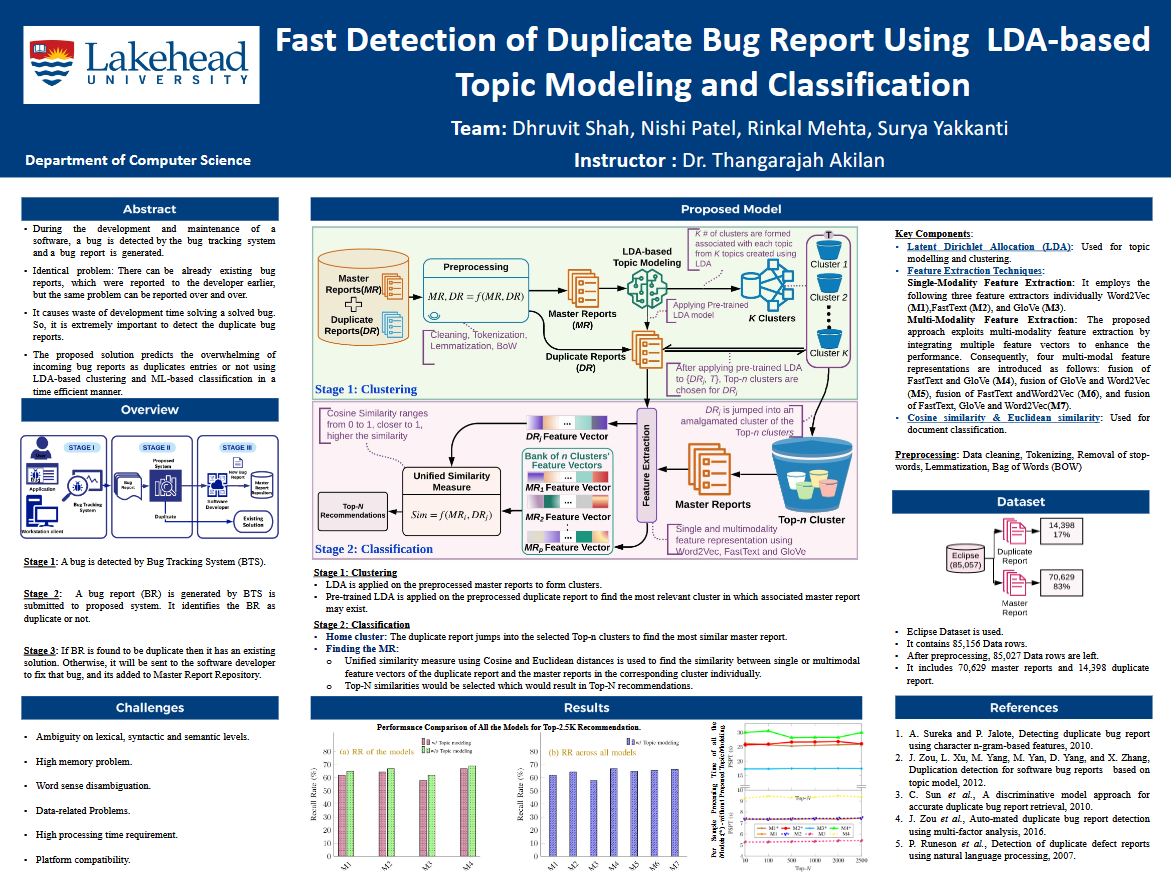
During the development and maintenance of a software, a bug is detected by the bug tracking system and a bug report is generated. Identical problem: There can be already existing bug reports, which were reported to the developer earlier, but the same problem can be reported over and over. It causes waste of development time solving a solved bug. So, it is extremely important to detect the duplicate bug reports. The proposed solution predicts the overwhelming of incoming bug reports as duplicates entries or not using LDA-based clustering and ML-based classification in a time efficient manner. [View Paper]